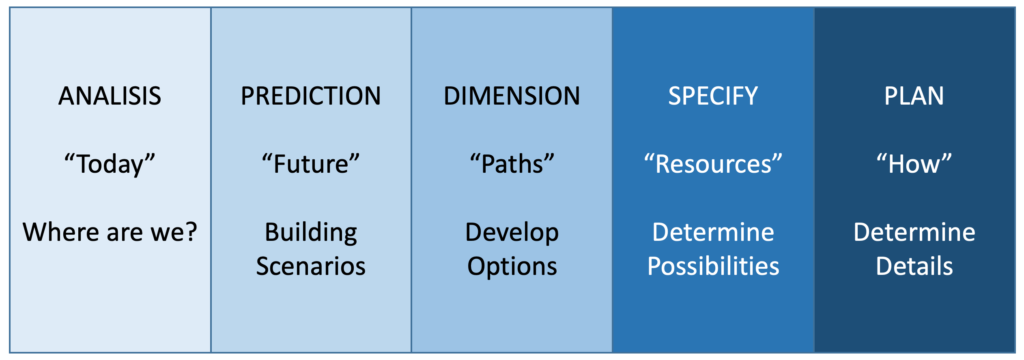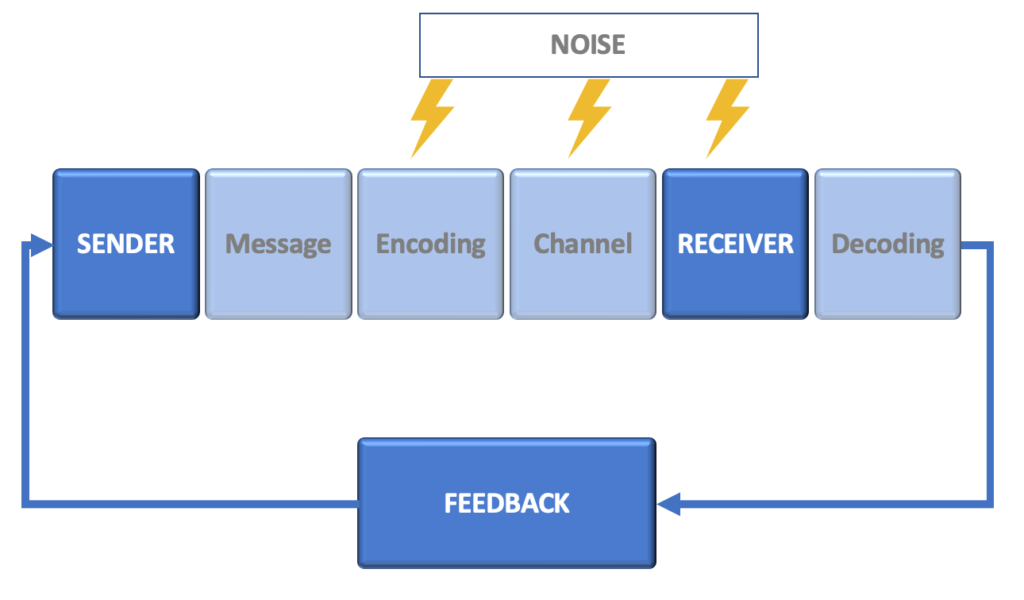The greek philosopher Bias of Priene is famously quoted saying: “Choose the course which you adopt with deliberation; but when you have adopted it, then persevere in it with firmness.” Summarizing this saying to fit into our short phrased world, you could say: “Think, then act!” This applies to our daily behavior as it applies to the implementation of corporate strategies.
Deciding without Analyzing
More often than not, corporate boards and executives jump onto the bandwagon of fashionable concepts, without truly understanding the full impact of their decisions. It seems that depending on how often business or mainstream media uses certain words, they become a mantra: AI, Big Data, VR, AR, Disruption, Agile, Digital Transformation. Especially the latter one seems to be in daily conversations and on the plate of most corporate executives.
Although digital transformation is such a hot topic, or maybe because of it, more than 84% of digital transformations fail, says Michael Gale of PulsePoint Group. [1] You might argue that Gale’s statement is based on inferior experience by corporate executives in 2015/2016, but even more recent research states that even in digitally savvy industries the success rate does not exceed 26% (74% failure) whereas in more traditional industries like oil, gas, automotive and infrastructure the success rate drops to 4%-11% (96% – 89% failure rate). [2]
The reason for this monumental failure can be summarized in the inappropriate management in two areas: STRATEGY and COMMUNICATION.
“Choose the course which you adopt with deliberation; but when you have adopted it, then persevere in it with firmness.”
Bias of Priene
STRATEGY
The word strategy comes from the greek word “strategia” and is a high-level definition of how to achieve one or more goals under conditions of uncertainty. [3] Many executives, however, do not develop, implement and pursue this “high-level definition” but rather implement annual strategic planning – an oxymoron, confusing strategy with plans.
Manager’s most favourite oxymoron: “Annual Strategic Planning”
To develop a strategy, executives have to first analyze and understand their business and the environment their business is operating in. A variety of analytic tools can help to achieve this basic clarity, like SWOT, MOST, BPM, Canvas, PESTEL, and CATWOE to just name a few. To have a clear understanding of what the organization’s vision and mission are, what value you offer, to whom you offer it, who pays and who consumes is fundamental to develop a successful strategy.
Once organizations, not just the executives, understand their business and the environment they are operating in, they have to analyze tendencies and new developments, contemplating potential futures for their business, analyzing probabilities, risks and effects. A taxi company might, for instance, consider the probability of autonomous shared carpools and their potential impact on this specific company.
Equipped with this information, executives can start plotting a path towards these potential futures, not focussing on specific initiatives or tasks, but rather on what the criteria are under which specific initiatives and tasks contribute to achieving the company’s vision and mission. The following table identifies strategies vs. initiatives and tasks:

After having identified the possible paths to the envisioned future, organizations have to specify the required resources to execute their strategy and finally plan specific initiatives and tasks, determining the key performance indicators (KPI) to control the successful execution of these tasks.
This 5-step process, visualized in very general terms below, can guide organizations, helping them determine their strategies, plan the required resources and define KPIs.

COMMUNICATION
The word communication is based on the Latin word “communicate”, meaning “to share”. It is the act of transferring ideas and meaning from one individual or entity to another, using mutually understood symbols, signs and rules. The process of communication can be broken down into 8 different steps, visualized in Image 3.

Because a majority of people understand communication as a simple 2-step process: “I say/mean” —> “You hear/understand”, many efforts for an effective communication fail. Not even considering the noise factor in communication, and just analyzing the difference between saying – meaning, and hearing – understanding it becomes obvious why communication frequently breaks down or does not achieve the intended result.
In the case of effective communication within organizations, executives and corporate leaders have to be consistently trained on the detailed process, visualized in Image 3. Internal and external communication has to be planned in detail and according to the receiver of the message. Keep in mind the basic rule of communication: “It does not matter what I say. What matters is what the other person understands!”
Taking the example of “Digital Transformation” as a supposed strategy, indulge yourself in asking just five different co-workers what comes to their mind when they hear these words. You might be surprised, or not, about the different perceptions you will encounter. This exemplifies the difficulty to communicate strategies through the use of simplified and not generally well-understood concepts, like “Digital Transformation”, “Artificial Intelligence” or “Big Data”, besides the fact that those are NOT strategies!
IMPLEMENTATION
Understanding the difficulties caused through flawed strategies or inefficient communication, what are the steps executives should take if their Board of Directors asks them to “do Digital Transformation”? What are the secrets of Corporate Transformation?
The following numbered list of steps is a very simplified example that might not apply to all organization the same way, however, it will help executives to become aware of a general framework they should use for this kind of initiatives that will have a profound and lasting impact on their specific organization.
- Vision & Mission:
- Do you have a clear, short and crisp vision and mission? (If not: initiate first a process to develop or clarify vision & mission.)
- Does everyone in your organization know vision & mission and how their specific work fits in? (If not: Identify gaps and initiate a process to align the understanding of vision & mission in the organization.)
- Business Analysis:
- Do you know where your organization is in the marketplace, compared to the direct and indirect competition? (If not: initiate a process to analyze your business in detail, using different tools like Canvas, SWOT, etc.)
- Environment Analysis:
- Do you understand the environment in which your organization is acting? (If not: initiate a process to analyze the business environment in detail, using tools like PESTEL etc.)
- Trend Analysis (Potential Futures):
- Do you have a thorough understanding of trends in your industry as well as the economy in general? (If not: initiate a process to learn about new trends and how they shape or have shaped different industries and organizations.)
- Do you understand the probabilities of these new trends to become a reality in your industry? Do you understand the risks and opportunities? (If not: identify internal and external resources that can help you in evaluating these criteria.)
- Strategy (5-10 years):
- Do you have a clear and crisp strategy that responds to what you identified in 1.-4.? (If not: initiate a process to develop a strategy and the according criteria to set your organization on the path to success.)
- Does everyone in your organization know the strategy and how their specific work (initiatives and tasks) fits in? (If not: Identify gaps and initiate a process to align the understanding of your strategy in the organization.)
- Initiatives & Tasks (1-3 years):
- Do you have initiatives in your organization that respond clearly to the strategy and the identified criteria? (If not: revamp the initiatives in your organization and make sure they are aligned with the strategy. Review initiatives and tasks every 1-3 years, measuring whether they do contribute to the strategy as anticipated.)
- Does everyone in your organization understand how initiatives or their specific tasks fit into the strategy, mission, and vision? (If not: Identify gaps and initiate a process to align the understanding within the organization.)
DIGITAL TRANSFORMATION IS NOT A STRATEGY
Although Digital Transformation is a process or initiative that will profoundly affect your organization, in itself it is most certainly not a STRATEGY. However, the impact this kind of initiative has on all levels of any kind of organization merits a special status. Digital Transformation should be led directly by a C-Level executive, either the CEO or COO, or by someone under their direct and continuous supervision. Affecting the core of how business is being done in the organization, this task should not be delegated to a third-level manager.
Bibliography
[3] Freedman, Lawrence (2013). Strategy. Oxford University Press. ISBN 978-0-19-932515-3.
[4] Harper, Douglas. “communication”. Online Etymology Dictionary. Retrieved 2013-06-23.





